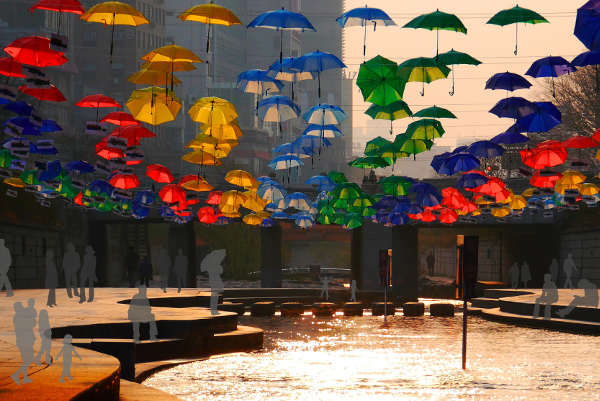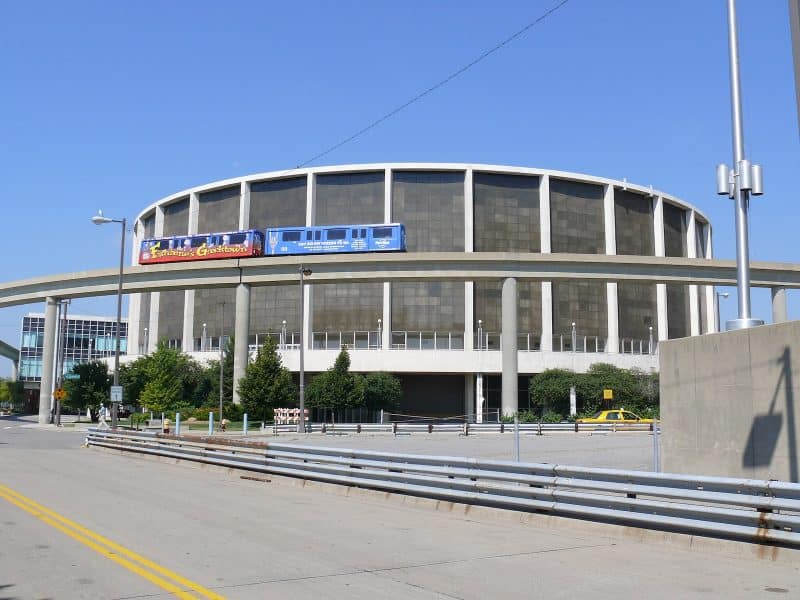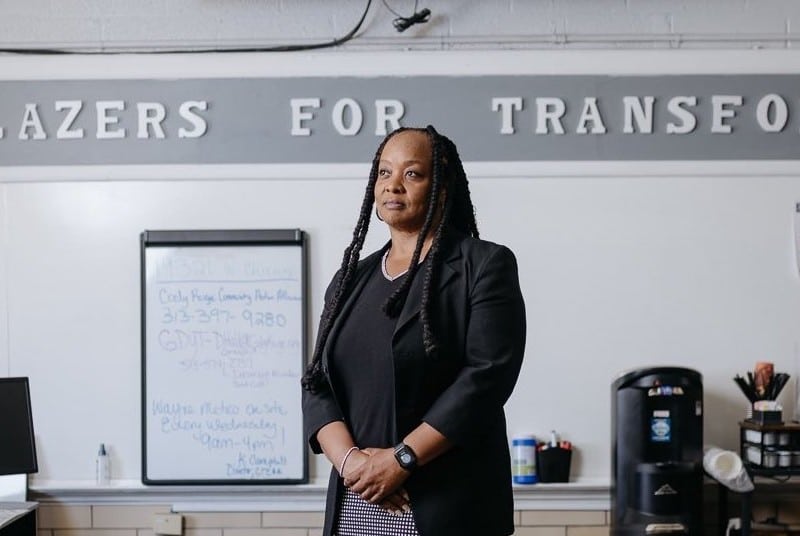Getting creative about freeway removal: If Portland can do it, why can’t Detroit?
Last week, we kicked off a three-part series asking Detroiters to imagine a new future for I-375, America's shortest (and arguably silliest) Interstate. For part two of the series, we present you with transportation projects from around the world where a community's collective desire for well-designed and healthy urban environments lead to creative transformations of freeways.

Last week, we kicked off a three-part series asking Detroiters to imagine a new future for I-375, America’s shortest (and arguably silliest) Interstate. That freeway’s fate is being reconsidered by the Michigan Department of Transportation, giving us, the people of Detroit, an opportunity to breathe life back into a portion of our city’s urban core that was long ago stripped of culture and vibrancy.
But will we take action?
For part two of this series, we bring you some inspiration to get your creative juices flowing: transportation projects from around the world where a community’s collective desire for well-designed and healthy urban environments lead to creative transformations of freeways.
From Brussels to Toronto, groups have demanded that auto-centric areas be given back to the people. Here are four examples to consider as we rethink the future of I-375.
Seoul: A river reemerges as a new Main Street
In the 1950s, Seoul city officials began a 22-year project to cover the Cheonggyechen River, replacing the open waterway downtown with a 12-lane-wide system of local roads and the elevated Cheonggye Freeway. Within 20 years of the project’s completion, however, Seoul decided to set itself on a new path that would improve residents’ quality of life and make the city more attractive.
The idea to bring back the Cheonggyecheon earned massive public support (79 percent in favor, according to one study), and in 2005 the Cheonggyecheon River took a breath of fresh air for the first time in decades. Today, it is the new Main Street of the city — a stunning 3.6-mile long linear park dotted with art installations, a museum, a wetland restoration area, and tributes to the river’s past. The project provides pedestrians with river access and the city a renewed public space.
Obsolescence and underuse, two of the primary motivators of other freeway downsizing projects, weren’t factors in Seoul. Before it was dismantled, the Cheonggye Freeway remained a vital automobile carrier, with traffic estimates of up to 168,000 cars per day (I-375 traffic is estimated between 14,000 and 54,000 cars per day in different locations).
There is no doubt that the removal of the freeway was at first unthinkable to some. To ease the pain of transition, the city launched a bus rapid transit line before closures began with promises to further strengthen public transit alternatives. Today, motivated by the necessity to create both a unified urban fabric and efficient ways to move through it, Seoul is home to a breathtaking riverfront park and one of the most comprehensive transit systems in the world.

Before photo credit preservenet.com
After photo credit Stari4ek, Flickr
Paris: From belching buses to beachfront promenade
Paris in the summer can be dreadfully hot and humid, and for those unable to escape to the seaside for a reprieve, the Paris-Plages is a welcome urban oasis. Initiated by Mayor Bertrand Delanoe in 2002, the now annual month-long closure of the Pompidou Expressway, which runs along valuable Seine riverfront, means trucks filled with sand, palm trees, and beach chairs unload their cargo so Parisians and tourists can relax in the transformed freeway. In 2007, an estimated 4 million visitors to the Paris-Plages enjoyed free concerts, a floating swimming pool, and waterfront cafes, and it the closure has since spread to three locations. In 2012, Delanoe announced plans to close the Pompidou permanently with the intent of “giving Parisians more opportunities for happiness.”

Before photo credit mbzt, Wikimedia Commons
After photo credit Peter Haas, Wikimedia Commons
Portland: Residents put their feet down
Portlanders took it one step further. The 1942 completion of Harbor Drive fragmented Portland’s city center, and a 1968 proposal to further widen the roadway was the last straw for many residents who saw an opportunity to create a brighter, greener future. In 1968, Portland residents formed the Riverfront for People coalition to demand complete removal of the freeway. Traffic engineers said it was impossible, but that didn’t stop Riverfront for People. Their advocacy earned the support of Gov. Tom McCall and his newly formed citizen advisory committee, and in 1978, Harbor Drive was removed. Today, a 37-acre waterfront park has taken the place of the freeway.
The project is seen as a catalyst that shifted Portland towards more pedestrian- and transit-centric development policies. The park transformed the appearance and character of Portland and serves as a reminder of the power of residents to demand and realise the future they desire.

Before image credit plannersweb.com
After photo credit Rob Lambert, Flickr
Germany: Millions flood autobahn for unfamiliar festival
In 2010, the European Union designated Germany’s Ruhr region as a European Capital of Culture, and the celebration was unusual. The A-40 autobahn went from serving one purpose to hundreds when it was closed for the day and 3 million people took to the pavement to, among other things, sit at a 37-mile table, the world’s longest. Festival goers on foot, bike, and skateboard engaged in various activities and exhibitions. The event, titled “Still Life,” displaced speeding autos with a twist on the conventional festival and used the atypical space to create a unique and memorable event that may help define the region’s identity for decades to come.

Before photo credit Hannes Grobe, Wikimedia Commons
After photo credit mr.g2003, Flickr
By now your imagination should be running wild with possibilities for reinventing I-375. So what is it you’re picturing? How can I-375 represent progress for Detroit? In your dream, is I-375 still a six-lane highway, or has it been transformed into something else?
Across the world, people are using their voices and creativity to conceive urban environments that work better for the lifestyles of the people within them. Can we in Detroit boldly embrace a future of people-oriented growth and envision I-375 as a new kind of paradise?
Main photo credit travel oriented, Flickr





